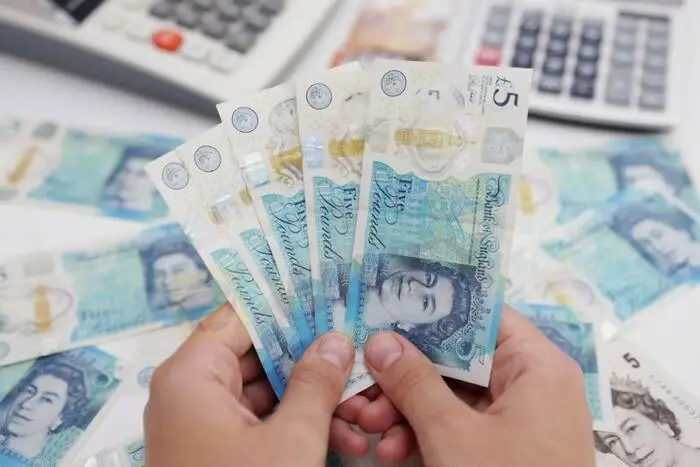简体中文
繁體中文
English
Pусский
日本語
ภาษาไทย
Tiếng Việt
Bahasa Indonesia
Español
हिन्दी
Filippiiniläinen
Français
Deutsch
Português
Türkçe
한국어
العربية
Sterling steady as double-digit inflation deepens growth fears
Abstract:The British pound was steady on Wednesday as data showed inflation climbed to its highest level in more than four decades in July, heaping pressure on the Bank of England to bring down prices but increasing the risk of a
The British pound was steady on Wednesday as data showed inflation climbed to its highest level in more than four decades in July, heaping pressure on the Bank of England to bring down prices but increasing the risk of a sharper economic slowdown.

Consumer price inflation rose to 10.1% in July, its highest since February 1982, official figures showed. A Reuters poll showed economists had expected inflation to rise to 9.8%.
Higher-than-forecast inflation supports the view that the Bank of England (BoE) will follow up last months 50 basis point rate rise with a second consecutive half-point increase in September.
Money markets are now fully pricing in a 50 basis point rate rise from the central bank next month, with outside chances of a larger 75 basis point rate hike, according to data from Refinitiv.
Traders are now also pricing in a further 200 basis points of tightening by May next year, taking the Bank Rate to 3.75%. Prior to labour market data on Tuesday, traders expected interest rates to peak in March with a further 150 basis points of tightening, Refinitiv data showed.
Even with inflation running at its highest level in decades, analysts said the outlook for the pound remained bleak as front-loading rate rises increased the risk of a hard landing for the economy.
“Sterling is highly correlated to UK recession risks right now,” said Viraj Patel, global macro strategist at Vanda Research, who said that Wednesdays data is likely to lead to faster, front-loaded tightening from the BoE.
“Today‘s CPI print reinforces the stagflationary risks in the UK. You wouldn’t necessarily want to be holding a risky currency like sterling into a recession.”
At 1105 GMT, the pound was little changed at $1.20945.
Against the euro, sterling was also flat at 84.02 pence, after earlier touching its strongest level against the single currency since Aug. 4 at 83.90 pence.
British two-year government bond yields surged to their highest since November 2008 following the data.
The gap between 2-year and 10-year gilt yields – sometimes viewed as a signal of recession – was at its most inverted or negative on record at around minus 17 basis points, according to Refinitiv data going back to late 2010.
Longer-dated yields are typically higher than shorter-dated yields because investors demand a premium to compensate for the risk of buying bonds that mature years later.
The BoE said this month it expected inflation was likely to peak at 13.3% in the fourth quarter, due mostly to the surge in energy prices. The central bank also forecast a five-quarter-long recession, beginning at the end of this year.
Disclaimer:
The views in this article only represent the author's personal views, and do not constitute investment advice on this platform. This platform does not guarantee the accuracy, completeness and timeliness of the information in the article, and will not be liable for any loss caused by the use of or reliance on the information in the article.
WikiFX Broker
Latest News
HTFX Clone Firm Exposed
TradeExpert: A Forex Broker Under Scrutiny
Trader Turns $27 Into $52M With PEPE Coin, Breaking Records
ASIC Sues HSBC Australia Over $23M Scam Failures
Singaporean Arrested in Thailand for 22.4 Million Baht Crypto Scam
IOTA Leads Blockchain Innovation in Southeast Asia by 2025
Beware of Celebrity Crypto Scams: Drake’s Social Media Account Hacked
FCA Seeks Input to Shape UK Crypto Market Regulations
Understanding the Impact of Interest Rate Changes on Forex Markets
Elderly Malaysian Businessman Loses RM704K to WhatsApp Investment Scam
Currency Calculator



